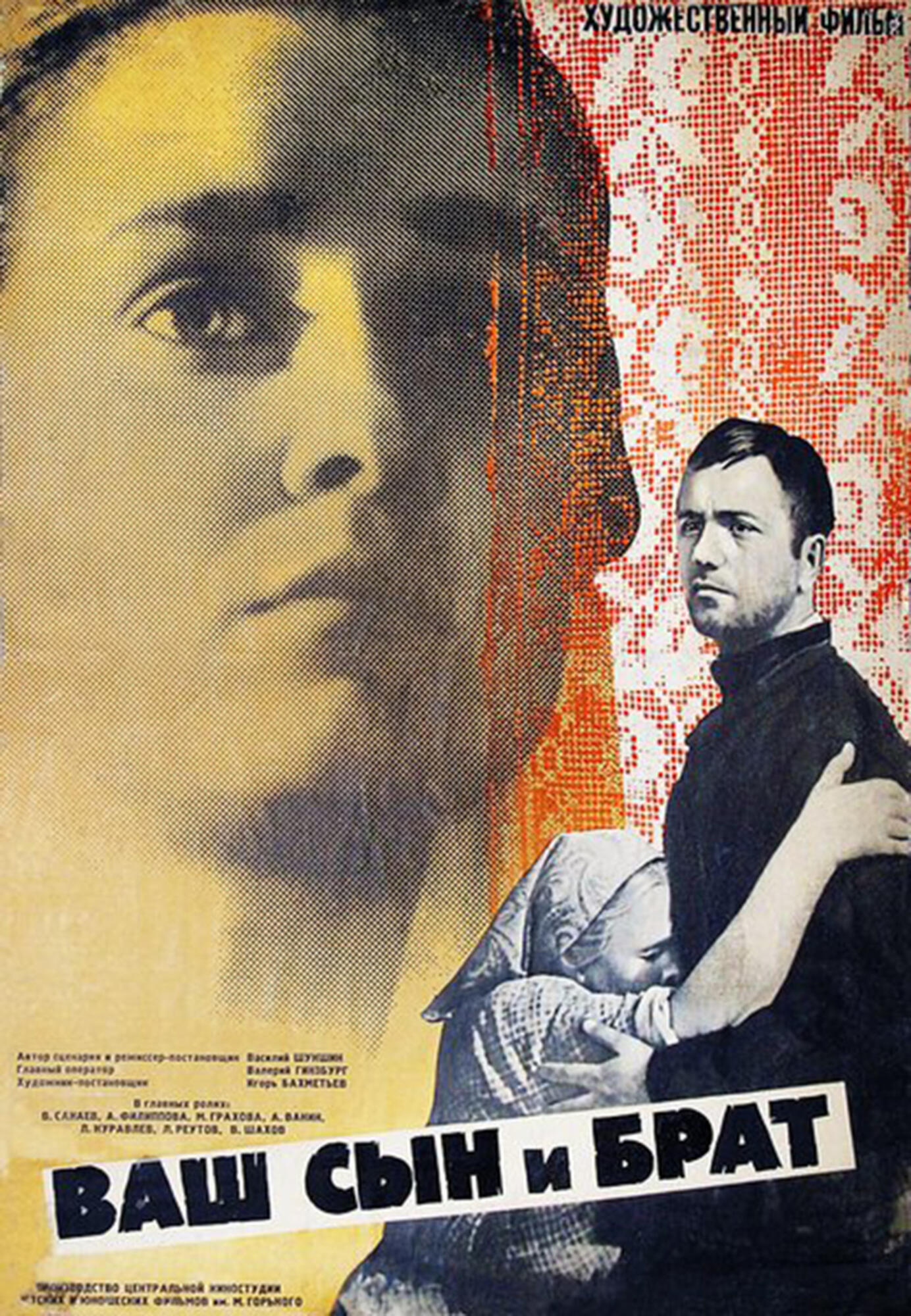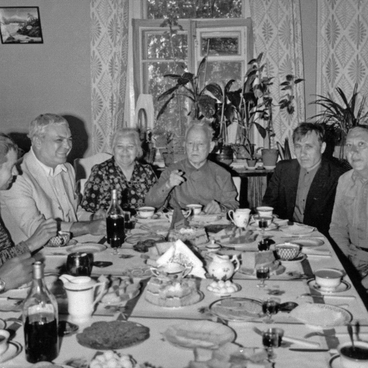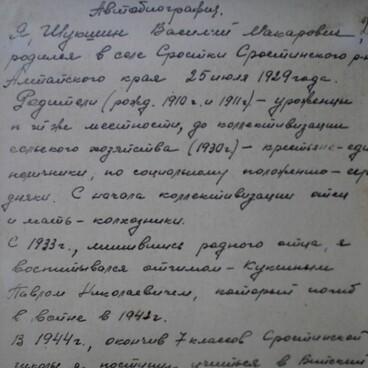Vasily Shukshin’s Your Son and Brother was released in 1967. It received Vasilyev Brothers State Prize of the RSFSR
The film was conceived in summer 1964, while Shukshin took part in filming What Is The Sea? in Sudak. He invited cameraman Valery Ginzburg to Crimea. There, the director read several short stories to his guest, namely Ignakha has arrived, Styopka, and Snake venom from Village Dwellers storybook. These novels became the basis for Your Son and Brother.
On the 19th of February, 1965, the Screenplay and Editing Board of Gorky Film Studio approved the script. In the spring of the same year, Ginzburg flew to Altai to shoot external locations for the prologue of the film. The cameraman was so thrilled with Altai nature that he produced some “spare” material. Shooting took place in the vicinity of Manzherok village. The film starred Leonid Kuravlyov, Vsevolod Sanayev, and Alexey Vanin. The role of a mute girl, the daughter of old man Voyevodin, was played by actress of the Mimics and Gesture Theatre Marta Grakhova.
Your Son and Brother told the stories of ordinary people, the Siberian village residents. It raised the issue of youth migration to the cities — rural life seemed hopeless, uninteresting, and dull to them. “If you moved, remember what you left behind”, Shukshin urged on the matter.
Both image of protagonist Stepan and plot of Shukshin’s story diverged from Soviet cinematographic standards. According to tradition, if a person stumbled and became bad, then the film had to ‘re-educate’ them, which culminated in self-redemption in the end. Stepan did not fit into this cliché: he escaped from prison shortly before his release, as he ‘saw the village in dreams’.
The film received mixed reviews. Therefore, Shukshin made several comments after the premiere. ‘[Stepan] is endearing due to this very attachment to his homeland, to the village… To me, village is longing not only for forest and steppe beauty, but for soulful immediacy as well. I don’t want to say that it was preserved only in a village, and cannot be found in a city. Soulful openness exists in cities too, but it is much more visible, when close to the land. After all, the entire person is in plain sight in a village. That is why all my characters live there’, Shukshin noted.
The film was conceived in summer 1964, while Shukshin took part in filming What Is The Sea? in Sudak. He invited cameraman Valery Ginzburg to Crimea. There, the director read several short stories to his guest, namely Ignakha has arrived, Styopka, and Snake venom from Village Dwellers storybook. These novels became the basis for Your Son and Brother.
On the 19th of February, 1965, the Screenplay and Editing Board of Gorky Film Studio approved the script. In the spring of the same year, Ginzburg flew to Altai to shoot external locations for the prologue of the film. The cameraman was so thrilled with Altai nature that he produced some “spare” material. Shooting took place in the vicinity of Manzherok village. The film starred Leonid Kuravlyov, Vsevolod Sanayev, and Alexey Vanin. The role of a mute girl, the daughter of old man Voyevodin, was played by actress of the Mimics and Gesture Theatre Marta Grakhova.
Your Son and Brother told the stories of ordinary people, the Siberian village residents. It raised the issue of youth migration to the cities — rural life seemed hopeless, uninteresting, and dull to them. “If you moved, remember what you left behind”, Shukshin urged on the matter.
Both image of protagonist Stepan and plot of Shukshin’s story diverged from Soviet cinematographic standards. According to tradition, if a person stumbled and became bad, then the film had to ‘re-educate’ them, which culminated in self-redemption in the end. Stepan did not fit into this cliché: he escaped from prison shortly before his release, as he ‘saw the village in dreams’.
The film received mixed reviews. Therefore, Shukshin made several comments after the premiere. ‘[Stepan] is endearing due to this very attachment to his homeland, to the village… To me, village is longing not only for forest and steppe beauty, but for soulful immediacy as well. I don’t want to say that it was preserved only in a village, and cannot be found in a city. Soulful openness exists in cities too, but it is much more visible, when close to the land. After all, the entire person is in plain sight in a village. That is why all my characters live there’, Shukshin noted.



